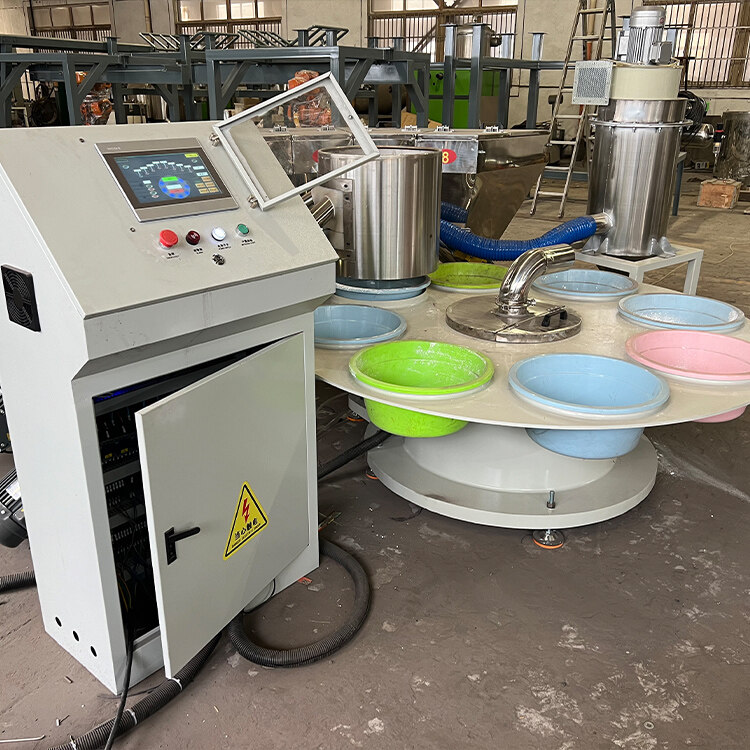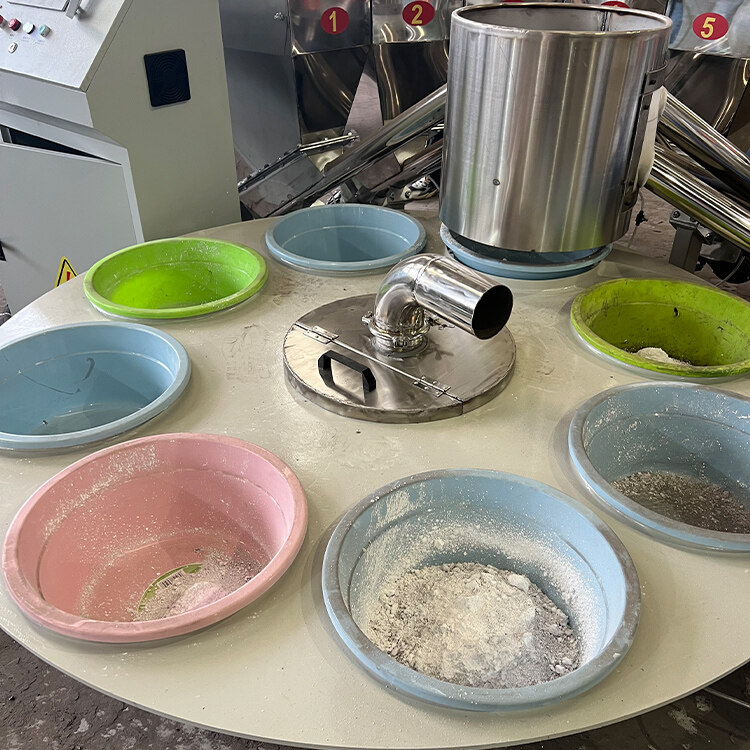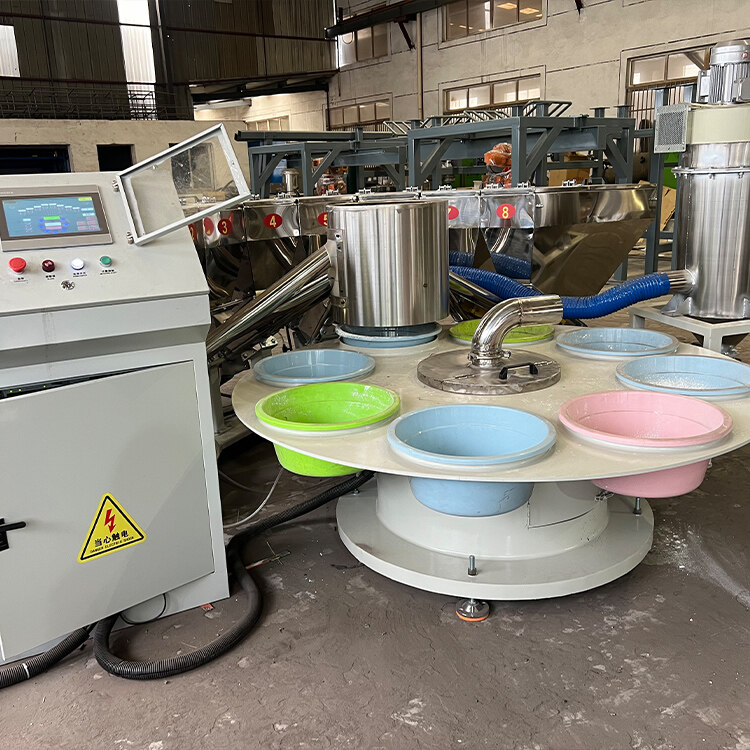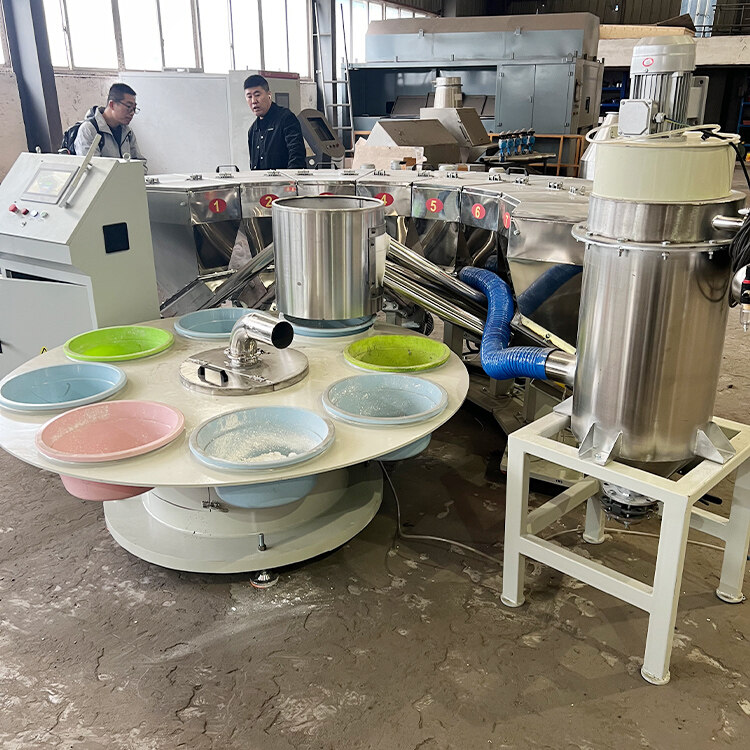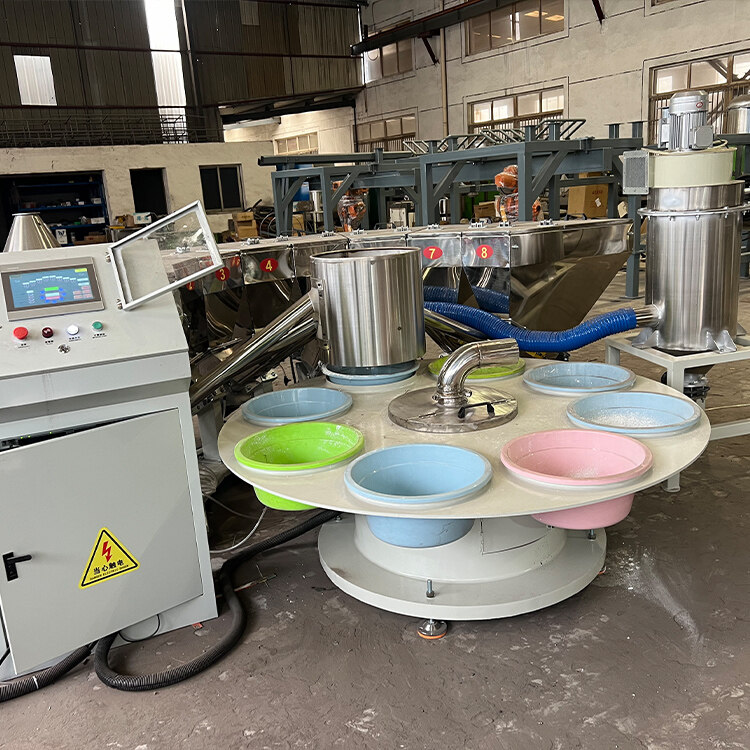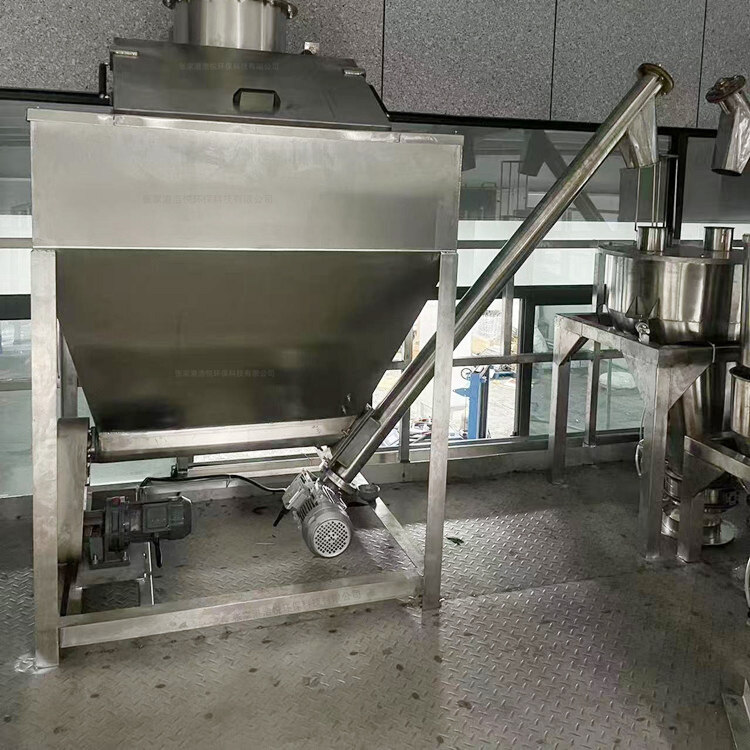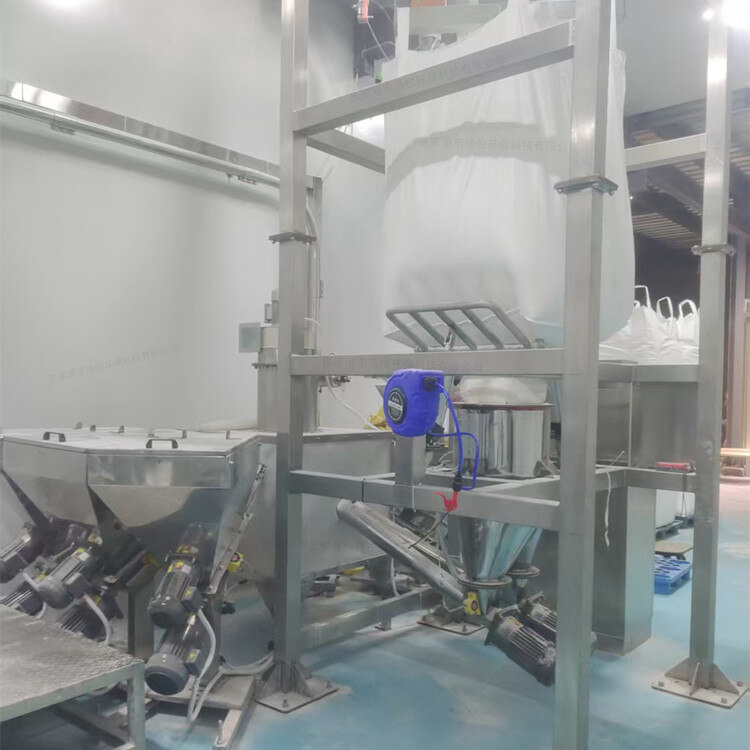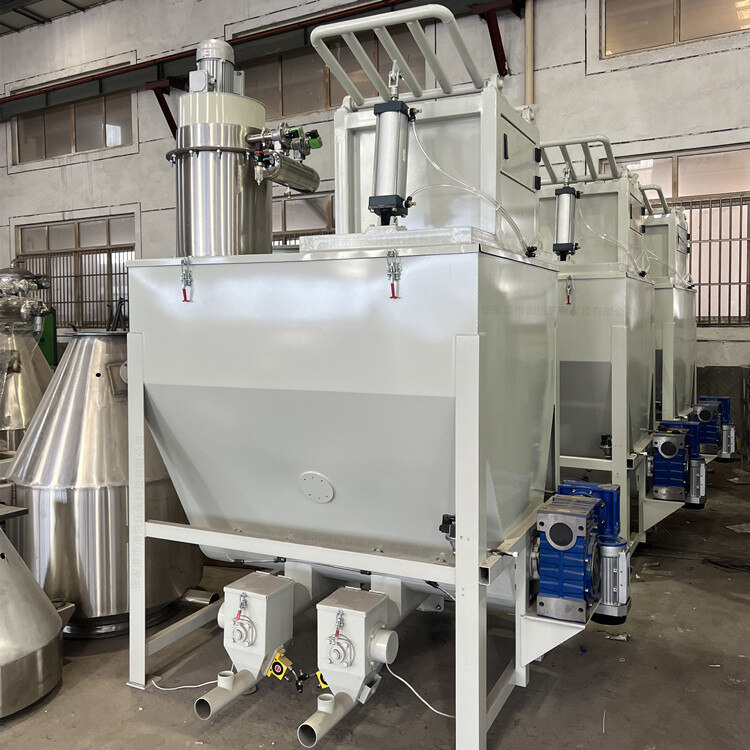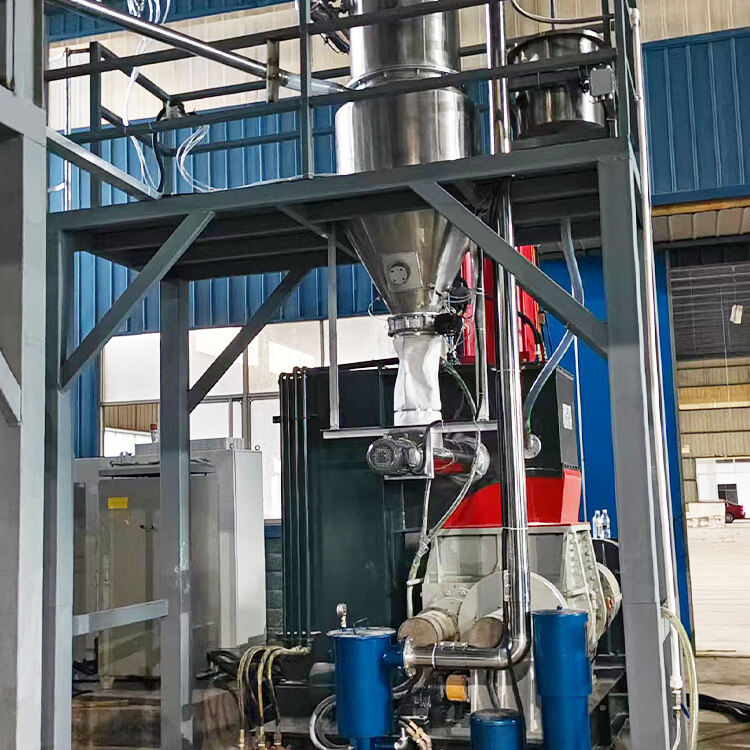- Introduction to automatic batching machine and fully automatic batching machine equipment
- The powder metering system tells you about the introduction of the mixing and drying machine
- 1000kg vacuum feeding machine
- Fully automatic small material batching system
- Research on Innovation of Automatic Weighing Machine Technology
- Design and operation of automatic batching system using PLC, industrial computer and frequency converter
Small ingredient formula machine
- Category:Batching Plant
- Hits:218次
- Release Date:2025-06-23
- Share:
- Inquiry
- Details
1、 Equipment functions and core advantages
Accurate measurement and formula management
Supports high-precision weighing of various materials (powder, granular, liquid), with a measurement accuracy of ± 0.1% - ± 1%, meeting the formula requirements for small materials (gram to kilogram).
Built in formula database, capable of storing dozens to hundreds of formulas, supporting one click calling, parameter modification, and historical record query, avoiding errors and mismatches caused by manual weighing.
Automated production and efficiency improvement
Integrating functions such as feeding, weighing, feeding, and mixing, it can be linked with production lines (such as connecting reaction vessels and packaging machines), reducing manual intervention and lowering labor intensity.
Parallel processing of multiple materials (such as weighing multiple scales simultaneously) can shorten batch production time and is suitable for flexible production of multiple varieties and small batches.
Error prevention and quality control
By scanning the barcode of the raw materials, re checking the weight, and verifying the formula, mechanisms are used to prevent material errors and omissions, ensuring product batch consistency.
Real time monitoring of weighing data and generation of reports to meet traceability requirements of quality systems such as GMP and HACCP.
2、 System composition and working principle
1. Core structural components
Material handling unit
Storage bin: Multi bin design (usually 4-20), with each bin corresponding to a material. The bin is equipped with level detection and anti bridging devices (such as vibrators and arch breakers).
Feeding mechanism: Select different methods based on the characteristics of the material, such as spiral feeding (suitable for dry powder), vibration feeding (suitable for particles), pneumatic valve feeding (suitable for liquids), and use a frequency converter to achieve two-step feeding of coarse and fine feeding, ensuring measurement accuracy.
Weighing unit
Weighing platform: equipped with high-precision weighing sensors (such as strain gauges and capacitive sensors), with a range covering 10g to 100kg, and equipped with dust covers and sealing devices to avoid dust interference in weighing.
Weighing bucket: Made of stainless steel material, the inner wall is smooth and easy to clean, and some models have heating function (to prevent material from absorbing moisture and clumping).
control system
PLC+touch screen: intuitive human-machine interface, supporting formula editing, parameter setting, and fault alarm; Can be integrated with MES system to achieve production data upload.
Software algorithm: Built in dynamic compensation algorithm, automatically corrects feeding inertia error, ensuring weighing stability.
auxiliary unit
Dust removal system: Start the dust collection fan during the weighing process to reduce dust overflow and meet environmental protection requirements.
Safety protection: emergency stop button, overload protection, leakage protection, some models come with explosion-proof design (suitable for flammable and explosive environments).
2. Workflow
Formula import: Enter or import formulas through the touch screen, set the weight and feeding sequence of each material.
Automatic feeding: manual feeding to the storage bin, or docking with upstream conveying equipment (such as vacuum feeding machine) to achieve automatic feeding.
Accurate weighing: Start the corresponding bin feeding according to the formula sequence, first roughly feed to 90% -95% of the target weight, and then precisely feed to the set value. The weighing data is fed back to the system in real-time.
Centralized feeding: After weighing is completed, the material falls into the mixing hopper through the discharge valve or is directly fed into downstream equipment. Some models have pre mixing function.
Data recording: Save weighing data for each batch and generate reports for traceability.
3、 Type and Applicable Scenarios
1. Classified by application industry
Food and seasoning industry
Application: Weigh essence, pigment, preservative, trace elements (such as salt, sugar, monosodium glutamate) for instant noodle seasoning package, baking materials, sauce formula.
Features: The equipment must comply with food grade standards (such as 316L stainless steel material, no dead corners design), support quick cleaning, and avoid cross contamination.
pharmaceutical industry
Application: Weighing raw materials and excipients (such as starch and lubricants) for the formulation preparation of tablets and capsules.
Features: With GMP certification, the weighing unit is sealed and dust-proof, supports online cleaning (CIP) and sterilization (SIP), and data can be encrypted and stored.
Chemical and Rubber Industry
Application: Weighing catalysts, additives, pigments (such as titanium dioxide and carbon black) for plastic granulation and coating production.
Features: Some models require explosion-proof design (Ex certification) to handle flammable chemical materials; Corrosion resistant materials (such as fluorine lining) are used to treat strong acid and alkali materials.
Feed and aquaculture industry
Application: Weigh trace additives such as vitamins, amino acids, minerals, etc., mix them according to the formula, and add them to feed.
Features: Large processing capacity (up to 10-50kg per weighing), anti dust interference, high cost-effectiveness.
2. Classify by structural form
Single scale formula machine: one weighing hopper, suitable for small variety and small batch formulas, with low cost.
Multi scale formula machine: Multiple weighing buckets work in parallel, suitable for multi variety and high-efficiency production (such as weighing 5-10 types of materials at the same time).
Weight loss formula machine: Control the feeding amount by monitoring the weight changes of the silo in real time, suitable for continuous production scenarios (such as extruder batching).
4、 Selection and maintenance points
Key parameters for selection
Weighing range and accuracy: Select the measuring range based on the minimum material quantity (for example, if the minimum material is 50g, a device with a measuring range of 1kg and an accuracy of ± 1g needs to be selected).
Material characteristics: Consider the flowability of the material (such as flour being prone to arching and requiring an arch breaking device), moisture absorption (such as milk powder requiring moisture resistance), and toxicity (requiring a fully enclosed design).
Production efficiency: Calculate the required weighing speed based on batch output (if each batch contains 10 types of materials and requires 10 minutes to complete, then the weighing time for a single material should be ≤ 1 minute).
Daily maintenance suggestions
Regular calibration: Use standard weights to calibrate the weighing sensor at least once a year to ensure measurement accuracy.
Cleaning and maintenance: The weighing hopper and feeding mechanism need to be cleaned every shift to prevent material residue and deterioration (strictly enforced in the food/pharmaceutical industry).
Component inspection: Check the wear of belts, screw shafts, and pneumatic valves, replace aging seals in a timely manner, and avoid material or dust leakage.
5、 Industry Trends and Technological Upgrades
Intelligence and Digitalization: Integrating AI algorithms to optimize weighing paths, achieving remote monitoring and fault warning through the Internet of Things (IoT).
Modular design: The number of storage bins can be expanded, and an automatic feeding module can be added to meet the needs of formula expansion.
Green and energy-saving: Low power sensors and energy-saving motors reduce energy consumption during equipment operation.
The small ingredient formula machine solves the pain points of low efficiency and large errors in manual weighing through automated measurement and precise proportioning, and has become a key equipment for improving production standardization, especially in industries with strict quality control, such as pharmaceuticals and food. Its technological development is evolving towards a more intelligent and flexible direction to meet the needs of diverse and personalized production.


